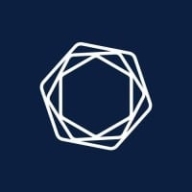

Tenable.io Container Security and Red Hat Advanced Cluster Security for Kubernetes compete in the container security space. Tenable.io holds an advantage in integration capabilities while Red Hat is stronger in cluster management.
Features: Tenable.io Container Security is highly noted for its vulnerability scanning, integration capabilities, and straightforward deployment. Red Hat Advanced Cluster Security for Kubernetes is recognized for advanced cluster management, policy enforcement, and configuration and compliance in large-scale environments.
Room for Improvement: Users of Tenable.io Container Security suggest the need for better threat intelligence, real-time monitoring capabilities, and more streamlined updates. Red Hat Advanced Cluster Security users point to the necessity of improved update processes, enhanced learning curve for new users, and more responsive customer support.
Ease of Deployment and Customer Service: Tenable.io Container Security is praised for straightforward deployment and responsive customer service. Red Hat Advanced Cluster Security offers flexible deployment options but has slightly lower customer support ratings compared to Tenable.io.
Pricing and ROI: Tenable.io Container Security’s pricing is competitive, with a good return on investment for small to mid-sized enterprises. Red Hat Advanced Cluster Security, seen as more expensive, provides a higher ROI for large organizations needing extensive cluster security features.
| Product | Market Share (%) |
|---|---|
| Red Hat Advanced Cluster Security for Kubernetes | 2.2% |
| Tenable.io Container Security | 1.1% |
| Other | 96.7% |


| Company Size | Count |
|---|---|
| Small Business | 6 |
| Midsize Enterprise | 2 |
| Large Enterprise | 4 |
| Company Size | Count |
|---|---|
| Small Business | 2 |
| Midsize Enterprise | 2 |
| Large Enterprise | 4 |
Red Hat Advanced Cluster Security for Kubernetes is a Kubernetes-native container security solution that enables your organization to more securely build, deploy, and run cloud-native applications from anywhere. With its built-in security across the entire software development life cycle, you can lower your operational costs, reduce operational risk, and increase developer productivity while improving your security posture immediately. In addition, Red Hat Advanced Cluster Security integrates with security tools and DevOps in an effort to help you mitigate threats and enforce security policies that minimize operational risk to your applications. It also enables you to provide developers with actionable, context-rich guidelines integrated into existing workflows, along with tooling to support developer productivity. The solution is suitable for small, medium, and large-sized companies.
Red Hat Advanced Cluster Security for Kubernetes Features
Red Hat Advanced Cluster Security for Kubernetes has many valuable key features. Some of the most useful ones include:
Red Hat Advanced Cluster Security for Kubernetes Benefits
There are many benefits to implementing Red Hat Advanced Cluster Security for Kubernetes. Some of the biggest advantages the solution offers include:
Reviews from Real Users
PeerSpot user Igor K., Owner/Full Stack Software Engineer at Maraphonic, Inc., says, “The solution allows teams to create their own virtual spaces and share resources. The most valuable feature is the ability to share resources.”
Tenable.io Container Security is a container security platform that delivers end-to-end visibility of Docker container images, providing vulnerability assessment, malware detection, and policy enforcement before and after deployment. It also integrates into your DevOps pipeline to eliminate security blind spots without slowing down software development. In addition, Tenable.io Container Security provides proactive visibility and security so your organization can solve the security challenges of containers at the speed of DevOps.
Tenable.io Container Security Features
Tenable.io Container Security has many valuable key features. Some of the most useful ones include:
Tenable.io Container Security Benefits
There are many benefits to implementing Tenable.io Container Security. Some of the biggest advantages the solution offers include:
We monitor all Container Security reviews to prevent fraudulent reviews and keep review quality high. We do not post reviews by company employees or direct competitors. We validate each review for authenticity via cross-reference with LinkedIn, and personal follow-up with the reviewer when necessary.